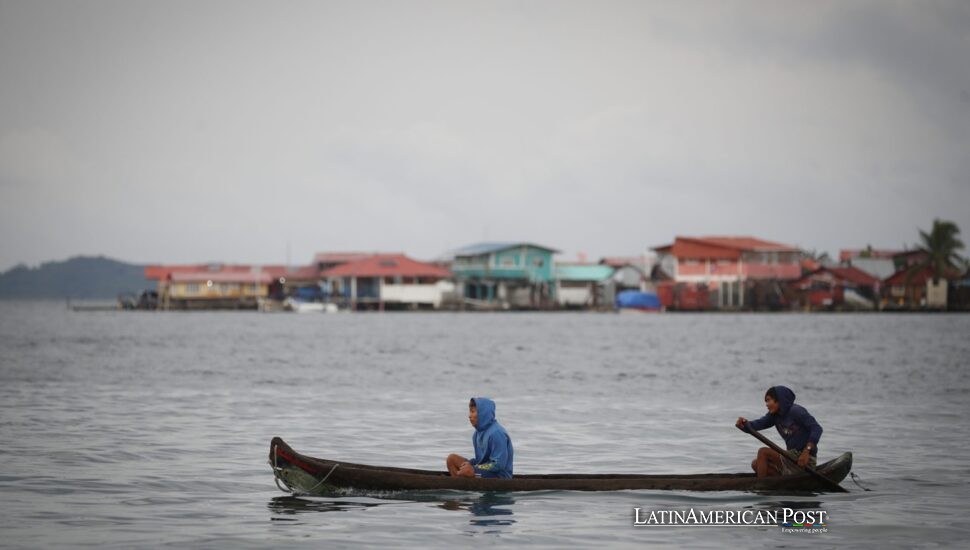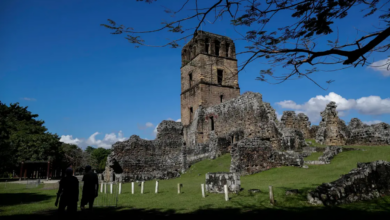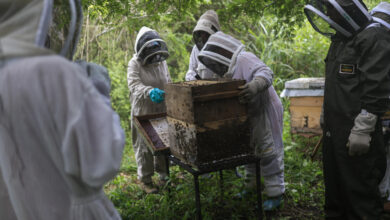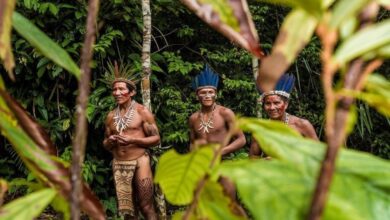Panama’s Rising Seas Displace Hope Seeking Indigenous Islanders

The Guna Indigenous people leave their ancestral coral atolls near Panama’s northern shoreline for the mainland. Rising seas force this small nation to depart from the Caribbean islands they have called home for centuries. The relocation shows how climate change affects real communities and the struggle to keep traditions alive. A complete transfer of homes, families, or cultural practices brings serious difficulties to these island inhabitants.
The Island That Once Teemed with Life
On Gardi Sugdub, life used to flow with the sound of children laughing in narrow passageways and neighbors shouting greetings from doorstep to doorstep. This once vibrant island, not much larger than a few soccer fields, has harbored generations of the Guna people for over a century. But now, many of its dwellings sit empty—padlocked and deserted—while the breeze ruffles loose tin sheets on abandoned roofs. Families who resided in cramped wooden huts have taken a bold step: traveling by canoe or boat across short stretches of open water to settle into new homes on the mainland.
According to BBC reporting, their departure came last year when the Panamanian government announced it was time to begin moving people away from Gardi Sugdub. Officials had been concerned for decades about overpopulation, but rising sea levels turned those concerns from a logistical question into an urgent threat. The government described the island as facing “imminent risk,” believing that climate projections show continued rising waters that will submerge most of Gardi Sugdub, likely making it uninhabitable by 2050.
The island’s longtime residents, the Guna, maintain a deep bond with the sea. Many older islanders insisted the watery horizon they faced was part of their identity. Still, the intensifying floods, storms, and overcrowding meant the island’s future was uncertain. The final decision was that hundreds of families would relocate to a newly built settlement consisting of pristine rows of prefabricated homes with modern amenities like plumbing and electrical lines. Yet even in the face of these better services, some Guna remain reluctant, skeptical of leaving the land (or water) that shaped their traditions.
Gardi Sugdub teemed with shops, improvised markets, and children weaving around neighbors gossiping on porches for decades. Wooden planks and metal scraps formed passageways barely wide enough for two people to pass. With so many off to the mainland’s newly established community, the once-bustling island exudes a hush, occasionally broken by waves sloshing beneath abandoned stilt homes. In many ways, it stands as a preview of future climate displacement, foreshadowing how global communities might adapt or resist in the face of rising oceans.
Deciding to Relocate or Remain
The exodus split the community. Several families welcomed the promised changes: permanent access to fresh water, 24-hour electricity, and secure streets for kids to roam freely. But others remained undecided. Some believed they would forfeit their heritage by shifting to identical rows of white and yellow houses with backyards for crops— a dramatic contrast to the tightly woven Gardi Sugdub structures that revolve around communal life. While comfortable, the new site’s neat geometry leaves many Guna longing for the ocean breeze and the labyrinthine layout they had called home.
The BBC documented the heartfelt dilemma. A few parents expressed relief that children can play without constant worry about floods or falling into the water in the new settlement. Yet older residents recall nights singing together or preparing fish around a single stove, experiences shaped by the island’s close quarters. Can these cherished communal rituals survive in the more spaced-out layout of the mainland settlement?
Some, like a local museum owner still sweeping the wooden floor of his old building, remain behind. He told the BBC that the Guna identity thrives best by the shore, adding that “the essence of our culture is on the islands.” He chooses to stay with a small group that must fetch supplies from the mainland or rely on the few open shops. The remaining dwellers are aware of intensifying high tides and the storms pushing water across the island’s only walkways, but they hold the optimism that they’ll endure.
The Panamanian government decided that moving the Guna people was absolutely necessary, not just a recommendation. Officials reached this conclusion as population growth, along with dire climate forecasts, pointed to an urgent situation that required immediate action. The government built nearly 300 houses in the new community, named Isberyala, and arranged for a boat route that allows residents to shuttle between the island and the mainland in about 15 or 20 minutes. With school attendance shifting to the new site, it’s evident that the transition is in full swing. How many more holdouts might eventually join, or whether the last few families will cling to the old island until the waters sweep them off?
Tradition Confronts Rising Seas
The Guna people have inhabited the archipelago off Panama’s northern coast for generations, some living there since the 19th century. They built huts atop coral foundations, forging a strong link to the water. Over time, population growth crowded Gardi Sugdub. Children typically played in small open areas, and the families stacked cots and hammocks in limited living spaces. The fishing tradition, along with outdoor celebrations, thrived in past decades. Elderly residents remember a time when water stayed far from their homes. But rising temperatures across Earth caused sea levels to rise, which really puts the island’s future at risk.
Even if some residents aren’t convinced that climate change caused these challenges, the upsurge in storms and tidal floods has become impossible to ignore. The BBC recounted families scrambling to move stoves and valuables onto higher shelves as waves flooded living rooms. Sometimes, people had to sleep on elevated hammocks while the ground level churned with seawater. Traditional weaving and cooking happened in such tight quarters that, once major flooding struck, daily life teetered on chaos.
Those who’ve relocated look forward to building gardens, planting fruit trees, and raising small livestock—luxuries that simply didn’t exist on the cramped island. On the other hand, they lament that they’re losing the immediate contact with the sea and the sense of community formed by living side by side. The new settlement promises improved schooling with actual sports fields instead of narrow alleyways. Teachers incorporate modern technology in the new environment and preserve Guna music and dance traditions to keep young people linked to their heritage.
Meanwhile, climate experts caution that Gardi Sugdub likely won’t be the last island to face this fate. Dozens more Gun-occupied atolls remain extremely low in elevation, each susceptible to intensifying storms and potential submersion. International organizations thus view this relocation as a pilot case: a living demonstration of how governments might handle mass displacements triggered by rising seas. If the Guna successfully preserves language and culture on safer ground, they could emerge as an encouraging example for other Indigenous or coastal communities across the globe.
Searching for a Livable Future
Opinions differ on whether the relocation is “successful.” Many Guna families say that while the new settlement is physically more comfortable, it disrupts a culture forged through intimate coexistence with the ocean. Authorities in Panama tout the plan’s practicality, pointing to a stable power supply, larger living areas, and safer conditions for children. Some officials propose that as climate-driven relocation accelerates worldwide, the Guna blueprint offers a constructive model of state-led community resettlement, complete with new infrastructure and local input.
Still, real hurdles persist. The relocated families lack easy access to advanced healthcare, with the promised medical facility in the settlement incomplete due to funding shortfalls. Water distribution sometimes falters, occasionally requiring households to revert to old ways of fetching water from remote wells or rivers. And questions remain about how long it may take for holdouts back on the island to join the rest. Despite official estimates that the island will be submerged by 2050, some dwellers brush aside the warning as alarmist, convinced that their centuries of resilience will continue.
For many watchers, the story underscores that displacement is never about houses or land. Culture, identity, memory, and familial bonds can’t simply be transplanted like household goods. The BBC learned from local parents that their children miss the nightly lullabies of ocean waves and the swirling exchange of neighbors. Yet even amid nostalgia, the move underscores how an entire people can adapt. Mothers in the new settlement are seen teaching the art of “molas” to daughters on modern porches with electricity, bridging old traditions with a new environment. Younger generations mix classic Guna rituals and spiritual beliefs with technologies and services that might help them prosper.
As other Guna islands watch the events at Gardi Sugdub, they see an inevitable shift and a potential formula for saving lives. Scientists predict that many more atolls worldwide will face the same predicament by the century’s end. Whether the Guna approach—some leaving, some staying— stands as a shining solution or a stumbling experiment remains debatable. But the community’s willingness to confront reality offers a cautionary tale for others teetering on the edge of climate-driven changes.
By the time the seas lap every doorstep, it may be too late for an orderly migration. For now, the Panamanian government is trying to handle the process step by step. The former residents of relocated families value better infrastructure but miss the authentic atmosphere of their previous island home. Senior community members still observe daybreak at the seaside as they rock in their chairs, trusting in the survival of their old dwellings. A clear split exists between those who departed or remained – this reflects how forced relocations create difficult personal decisions. Several Latin American nations study these developments closely, as similar situations could affect their seaside or riverside populations because of rising sea levels.
Also Read: Uruguay Embraces The Ocean Goddess And Renews Its Faith
The impact of Gardi Sugdub extends throughout the region. This small community shows how climate shifts disrupt entire cultures and demonstrates the resolve of people who maintain their customs. The success or failure of this move proves that protecting both heritage and physical well-being requires complex solutions. And so the Guna’s journey continues: forging new routines on the mainland, preserving cherished customs while the island they called home slowly fades into the sea.





